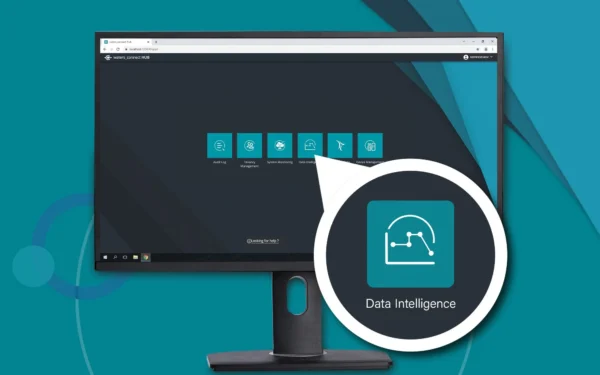Gone are the days of deciphering unfamiliar handwriting and searching through stacks of paper to find information about research conducted a year ago. Electronic lab notebooks (ELNs) now streamline every aspect of the research recording and sharing process. Moreover, ELN integration facilitates collaboration in a way that was never thought possible.
Integrating ELN Software into your research workflow is easier than ever. All you have to do is assess your needs, narrow down on an ELN provider, set up the ELN, train staff, and improve as you go. In such a scenario, it is unsurprising to see research labs embracing ELN integration massively. If you wish to get involved but aren’t sure how ELN integration works, here’s a guide to help.
1. Evaluate your needs
The first and most crucial step to ensure successful ELN integration is evaluating your lab’s needs. In simple terms, you should have a good understanding of how you’ll be using the ELN in your lab’s routine.
Consider these questions to find the right ELN for your lab:
● What experiments will you be conducting?
● How do you plan to record the research data?
● How do you want the data to be organized?
● Who will have access to this data?
● Do you wish to integrate your ELN with existing Laboratory Information Management Systems (LIMS)?
● What is your budget for an ELN?
Rather than answer these questions independently, work with your entire team. You should understand what each lab member requires from an ELN and the features that best fit their research initiatives to ensure successful adoption and utilization. Ultimately, if an ELN doesn’t make the job easy for your lab workers, it won’t be used to its full potential.
2. Choose an ELN
From open-source systems to enterprise-level solutions, there are plenty of options for investing in an ELN. However, the key to successful integration is finding an ELN that matches your lab processes and not the other way around.
Here’s an evaluation checklist to help you find the right ELN:
Step 1: Make a list of ELN vendors and research their offerings. What are their users saying about them? Do they have positive reviews?
Step 2: Reach out to potential vendors from your list to schedule interviews and demos. During these sessions, ask appropriate questions about their ELN’s features. For example, do they offer customization options, pricing, and IT support?
Step 3: After you gather all necessary information about the vendors through interviews and demos, evaluate each vendor based on factors such as the ELN’s user-friendliness, compatibility with your lab’s workflow, cost, and customer support. A user-friendly interface is one aspect you shouldn’t compromise on when choosing an ELN — even if the ELN has many attractive features, a poor user interface can lead to frustration.
Step 4: If a vendor offers personal demos and training, use this to get hands-on experience with the ELN. This will help you thoroughly understand all the features and functionalities and narrow down the most suitable option.
3. Set up the ELN
After you have chosen an appropriate ELN, the next step is to set it up in your research lab.
This will typically involve the following processes:
● Create user accounts for all the lab workers using the ELN. Make sure each person has their own unique login.
● Decide permissions and access controls. You should have a clear idea about who should be given access to certain information — this is important to keep data safe and organized.
● Create templates to make data recording easy. Sapio ELN comes with reusable, pre-built templates that can be customized to your needs. This significantly reduces the time and effort required to set up an ELN.
● Integrate and configure the ELN with other equipment and systems in your research lab, such as the data analysis software. Integrations make it easier to transfer data and streamline your workflow.
4. Train your lab members
Training your lab members is a strategic investment. It will help them understand efficient ways to make the most out of the ELN and ensure the ELN’s smooth integration into your lab’s operations.
A comprehensive training program should provide lab workers with the following information:
● An in-depth overview of the ELN’s features
● Instructions on how to use these features
● Best practices for data entry
● Guidelines for collaboration and sharing information
Sometimes, the ELN vendor might provide training and onboarding sessions. Urge your lab workers to participate in these sessions, as it will help them better understand the ELN’s advanced features and how to use them efficiently in their research processes.
5. Monitor and maintain the ELN
Things don’t end once an ELN is set up. You should monitor your ELN to catch and address any problems before they cause bigger issues. One way to do this is by listening to what users say about ELN.
Encourage your team to share their thoughts on the ELN regularly through surveys, meetings, or casual conversations. Take notes of both the positive and negative feedback and use them to make changes to the ELN — this might include fixing bugs or adding new features.
It is also essential to keep your ELN software up to date. Software updates typically include important security patches necessary for keeping your data secure. Also, if your ELN provider allows it, set up automatic updates so you don’t have to worry about manually updating the software. Ensure you back up your data before updating so that even if something goes wrong, you won’t lose important information.
Integrate Sapio ELN into your lab today
Successfully integrating ELN into your lab’s workflow is important to ensure efficiency and seamless collaboration. You can opt for advanced solutions, such as cloud-based ELNs, depending on your budget.
Sapio ELN is a comprehensive solution that covers all bases for managing your lab’s data and workflow. Our system features a user-friendly interface, customization options, and seamless integration capabilities. Whether you want to improve collaboration or enhance data security, our solutions won’t disappoint. Contact us now, and let’s discuss your ELN integration needs.
Frequently Asked Questions
How does the integration of an ELN affect the publication process of research findings?
Integrating an ELN can streamline the research publication process by ensuring that all experimental data and notes are organized and easily accessible. This can facilitate the preparation of manuscripts, as researchers can quickly find and reference their data. However, researchers must ensure that data from ELNs meet the standards and requirements of journals and publishers, including aspects related to data sharing and openness.
What are the specific challenges and solutions related to data privacy and security when integrating an ELN?
The integration of an ELN requires addressing data privacy and security challenges, especially in handling sensitive or proprietary research data. Solutions include using ELNs with robust encryption, access controls, and compliance with international data protection regulations (e.g., GDPR). Labs must also implement policies for data backup, disaster recovery, and training on data privacy best practices.
Can ELNs be effectively integrated with other digital tools and platforms researchers use, such as statistical software, project management tools, or external databases?
ELNs can often be integrated with other digital tools and platforms through APIs or export/import functions. This enables seamless workflows between statistical analysis software, project management tools, and external databases. However, the extent of integration depends on the ELN’s compatibility and the availability of integration features or third-party plugins designed to connect these various systems.
External Links
- ScienceDirect on ELN Implementation Challenges: This source discusses the workflow, electronic data, and integration challenges when implementing ELNs. It highlights the importance of user-friendly interfaces and the necessity of addressing the longevity and security of electronic records. Read further on ScienceDirect.
- Nature Protocols offers a comprehensive overview of implementing electronic laboratory notebooks in academic research environments, highlighting considerations for standardizing workflows, facilitating reproducibility, and ensuring regulatory compliance. It also discusses the balance between the financial costs and the benefits of ELNs in improving research practices.





